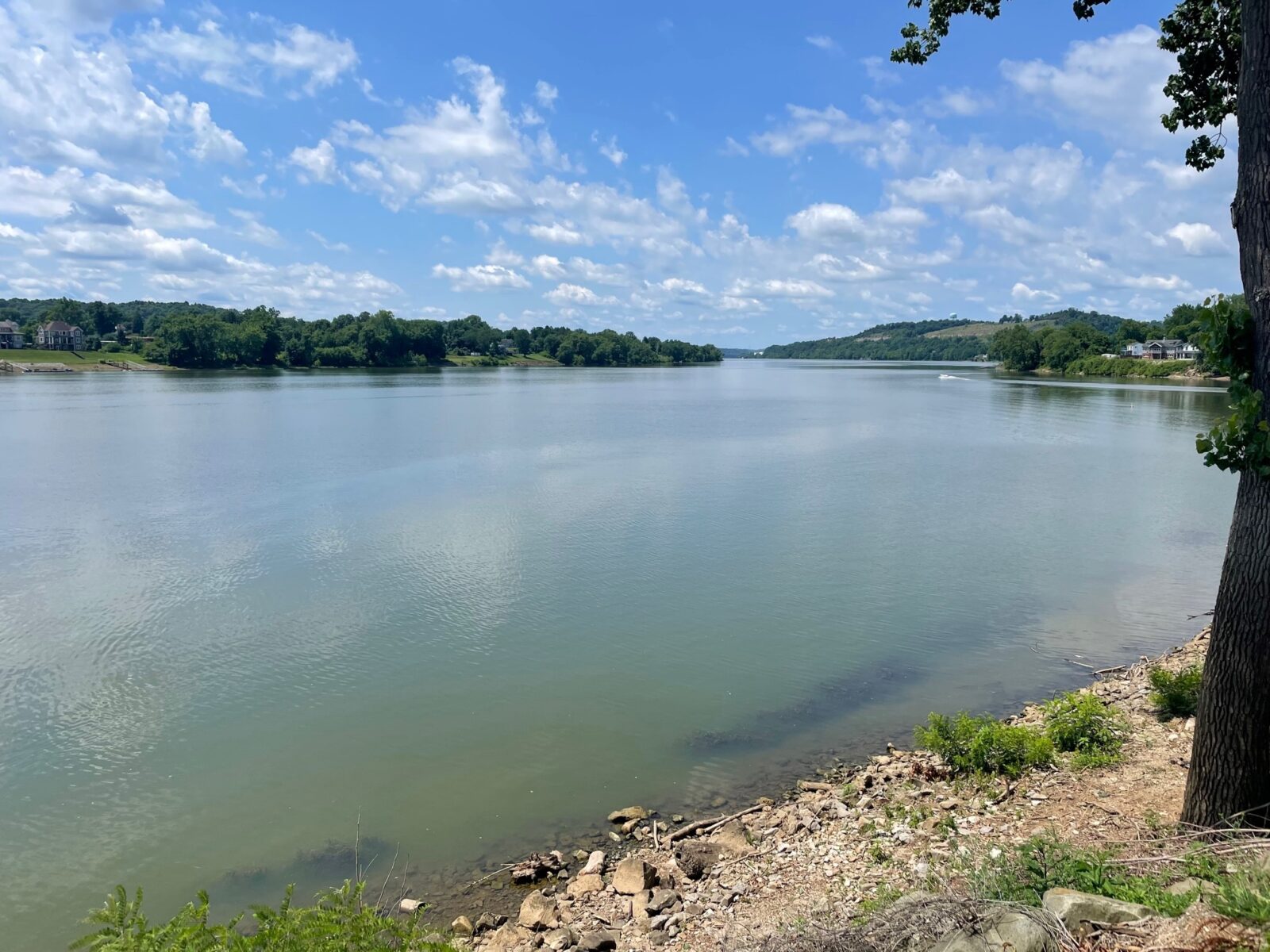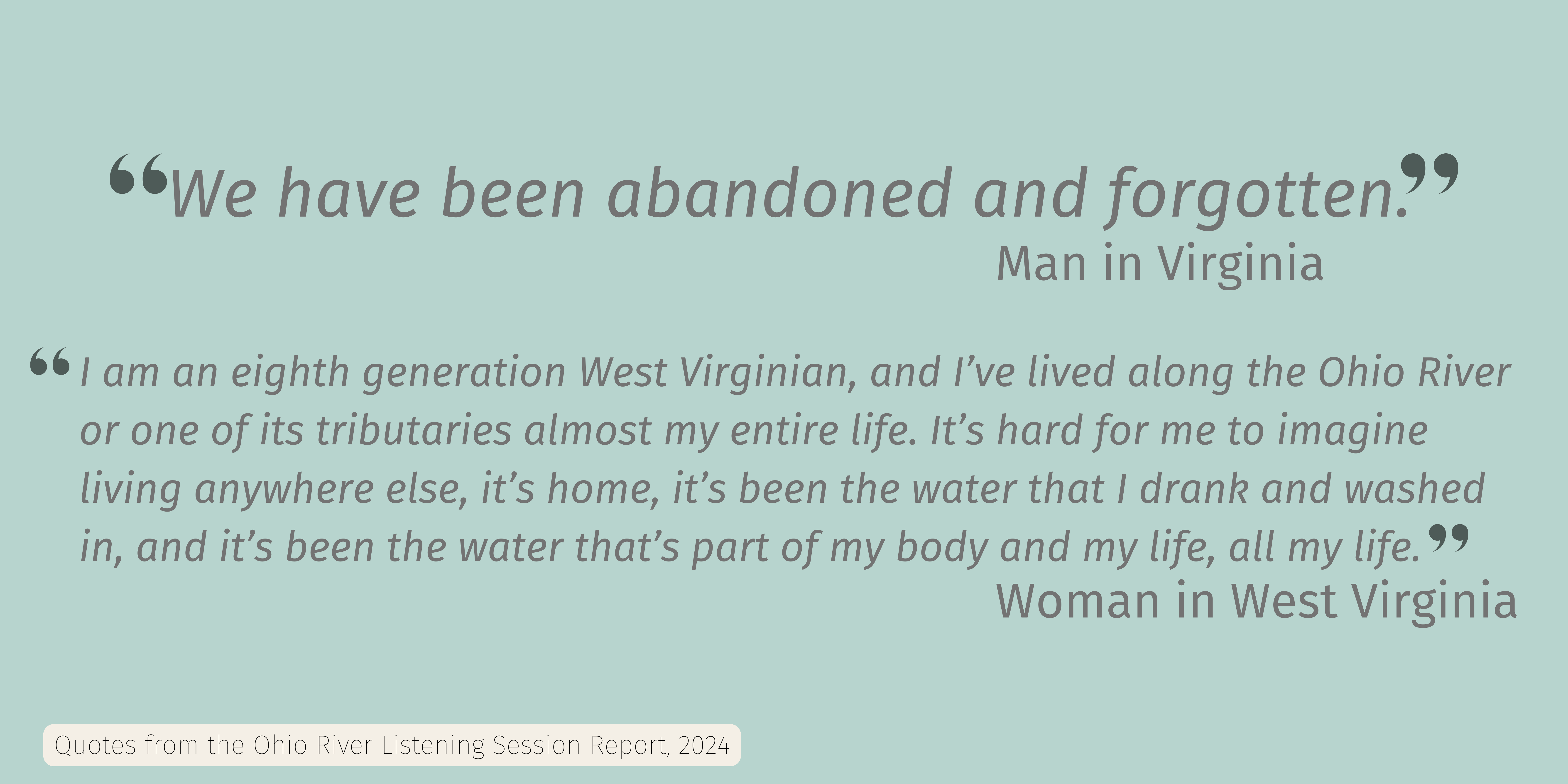We have much more to do and your continued support is needed now more than ever.
Giving Voice to Ohio River Restoration and Protection


Those two quotes, gathered during community meetings to discuss the clean water concerns of residents in the 14-state Ohio River Basin, sum up both the pride in living in a region defined by rugged mountains, flowing waters, abundant recreational opportunities, and diverse cultural experiences – and the anger at long-standing pollution and environmental degradation that has scarred many communities and threatens the health of people, fish and wildlife.
These perspectives – and many others – were gathered through a series of 31 community listening sessions, sponsored by the National Wildlife Federation, to better understand the concerns residents had about their local waters, as well as what they wanted to do to remedy those problems. Information from the sessions is helping to inform a plan to restore and protect the waters of the 14-state Ohio River Basin, which includes parts of Alabama, Georgia, Kentucky, Illinois, Indiana, Maryland, Mississippi, New York, North Carolina, Ohio, Pennsylvania, Tennessee, Virginia, and West Virginia. The plan, written under the leadership of the Ohio River Basin Alliance, will be delivered to Congress, with the goal of securing new federal investments to restore and protect the waters of the region.
In February, NWF, in collaboration with the Ohio River Basin Alliance, Ohio River Valley Water Sanitation Commission, and other partners, released a report on what we heard during the listening sessions and the implications for a regional restoration and protection plan.
Serious Threats to Local Waters
The Ohio River Basin, home to more than 30 million people, is one of the most richly biodiverse places in the United States. Yet the region’s interconnected rivers, streams, and wetlands face serious threats. Residents voiced their concerns about many issues: toxic pollution that poisons drinking water, mine waste that makes streams unsuitable for living organisms, sewage contamination that prevents recreation, runoff that causes toxic algal blooms, flooding that damages homes, businesses, and infrastructure, and habitat loss that harms native species. All of these problems – and many more – were raised during the community forums.

People are especially aware that many communities face disproportionate environmental impacts from toxic pollution, flooding, and other pollution, especially low-wage communities and communities of color. During the listening sessions, people highlighted the many people in the region that still lack access to clean drinking water and lack indoor plumbing. People at the listening sessions want to see federal investments help the towns and cities hardest hit by pollution to ensure everyone has access to clean, safe and affordable water, sewage treatment, and access to outdoor recreation and nature-based opportunities.
“Residents are dealing with serious threats to their drinking water, health, and well-being — and they want those problems addressed with a sense of urgency,” said Jordan Lubetkin, director of Ohio River Restoration for the National Wildlife Federation. “The onus is now on us to take what we’ve heard in local communities and put forward manageable solutions: a regional restoration and protection plan for the Ohio River Basin, so that every person in the region has access to clean, safe and affordable drinking water, healthy communities, and recreational opportunities. The good news is that we have solutions, and it is time to use them, before the problems get worse and more expensive to solve.”
The report, “Community Priorities for Ohio River Basin Restoration and Protection,” highlights overarching takeaways from the in-person and virtual sessions, including:
- People see drinking water contamination as a top concern, along with flooding.
- People see pollution prevention as essential to prevent new harm to people and communities.
- People see the restoration of local waters tied to the health of local communities and increased quality of life, such as increased access to recreational opportunities.
- People see restoration investments as strong local economic drivers and want workforce development and job training programs so local workers can benefit from restoration actions.
Findings from the listening sessions are helping guide the regional restoration plan, which will be completed in 2024.
Building a Movement for the Ohio River Basin
The listening sessions have helped the National Wildlife Federation to build up a strong network of people and organizations concerned about their local waters. In the coming year, we will be collaborating with various stakeholders to help transform this network of clean water champions into a more formal coalition that can advocate for the clean water needs of millions of people in the region who depend on Ohio River Basin waters for their drinking water, public health, jobs, and quality of life. Indeed, 2024 will be an exciting and transformative year for this often-overlooked region.
To learn more, download the listening session report, or sign up for email updates, visit the Ohio River Restoration page.





















